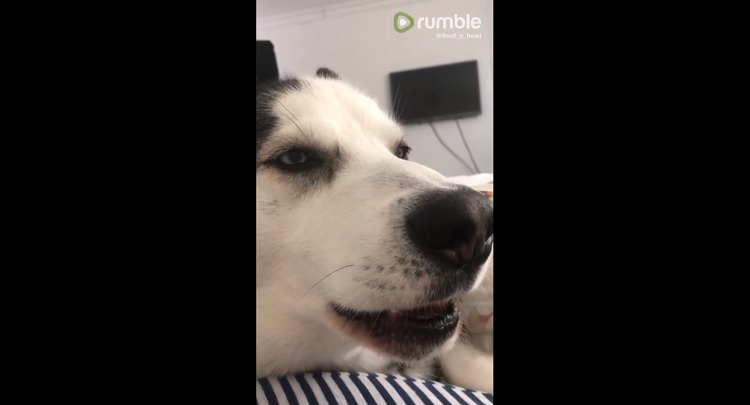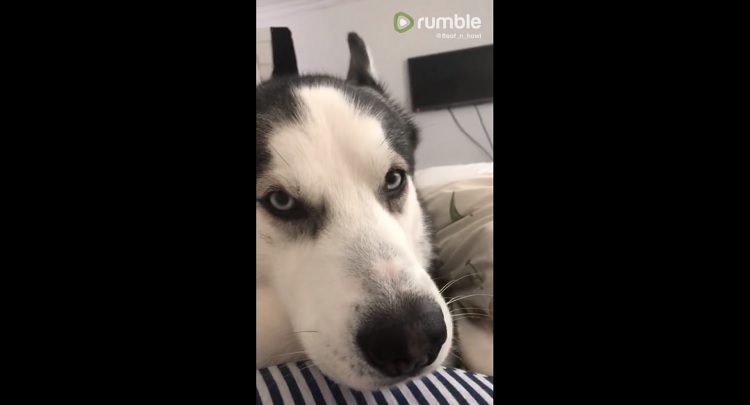Have you ever tried to teach your pet to perform a trick? In this case, the pet involved is usually a dog because it’s harder to teach other animals how to perform tricks.
It’s not unheard of but if you ever tried to give commands to your cat, you’ll know why.
Watch this husky say I love you to his owner below.
[rumble video_id=v5rawj domain_id=u7nb2]
Video credit: Rumble
But even though dogs tend to be more teachable, dogs also differ in the speed at which they pick up new tricks. Some of them even refuse to learn. The smarter dogs either join dog competitions or become police dogs or service dogs. For the rest, you’ll probably be happy enough if they can “sit” or “stay” on command.
The owner first says, “I love you!” and then the Husky starts “speaking.” Amazingly enough, even though their snouts are not built for verbal speech, you can just barely hear the beloved pooch articulate “I love you” back.
Huskies are well-known for their propensity to howl which is probably why they are better-adapted to mimicking human speech. But whether or not the dog really understands the significance of the words he’s repeating, for sure, he does feel that love and also expresses his own love in return.
After all, love can be communicated in numerous ways. From the way owners take care of their pets to the way pets adore their owners and even protect them, all of these activities encapsulate the words “I love you” but in a beautiful non-verbal manner.
In fact, people can learn a lot from the interactions between pets and their owners. People often say one thing but their actions are the total opposite of what they say. For example, saying, “My co-worker and I get along just fine” but they avoid each other as much as possible.
But when it comes to pets, the only way to really communicate is via body language and feelings. For instance, dogs can feel the anxiety of their owners, which is why service dogs are such a big help. It goes the same way when animals can somehow sense a person’s fear and therefore become more aggressive.
So when it comes to pets, this non-verbal communication is more “raw” and perhaps more real than how people relate to each other.
Replaced!




